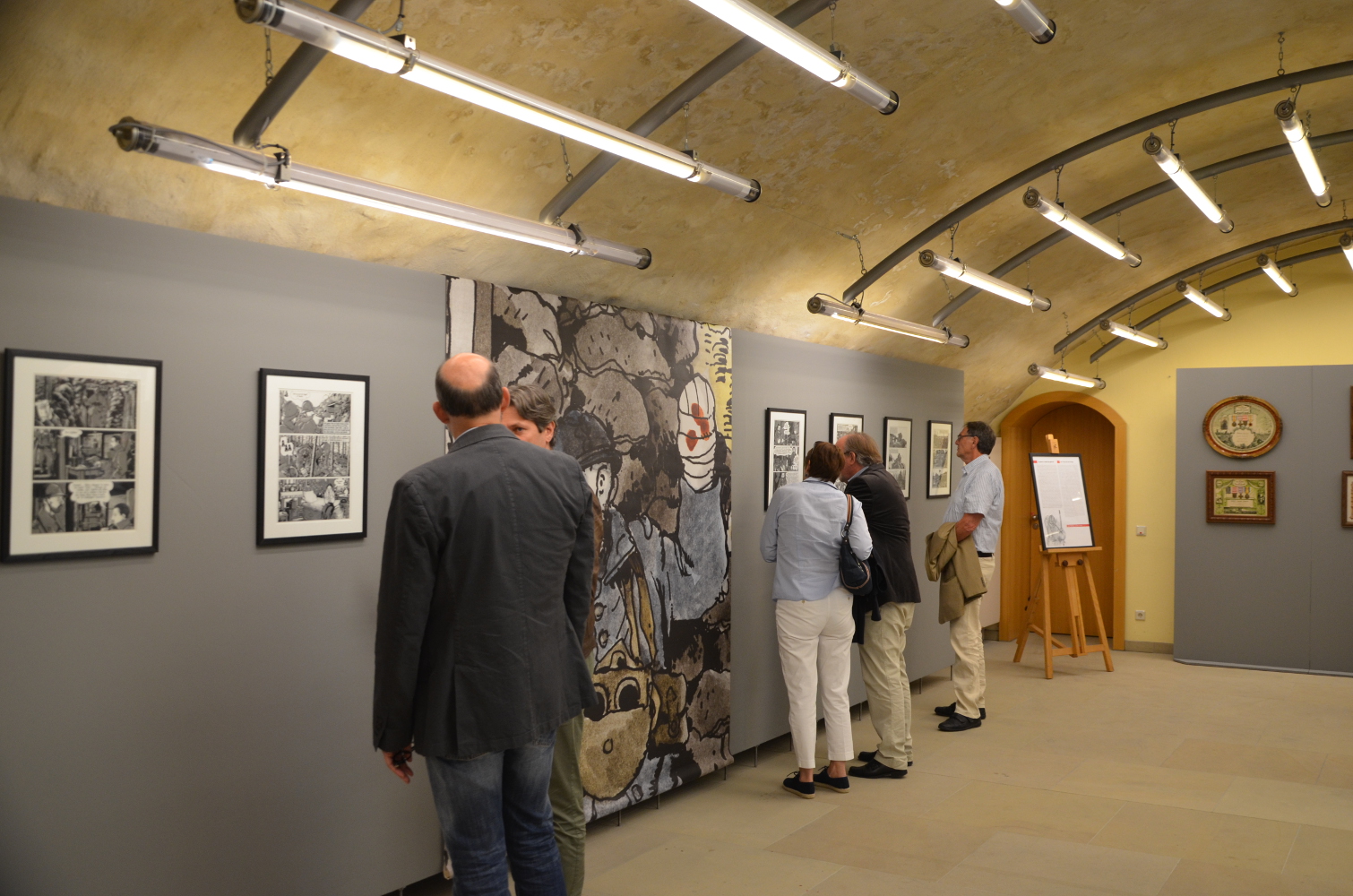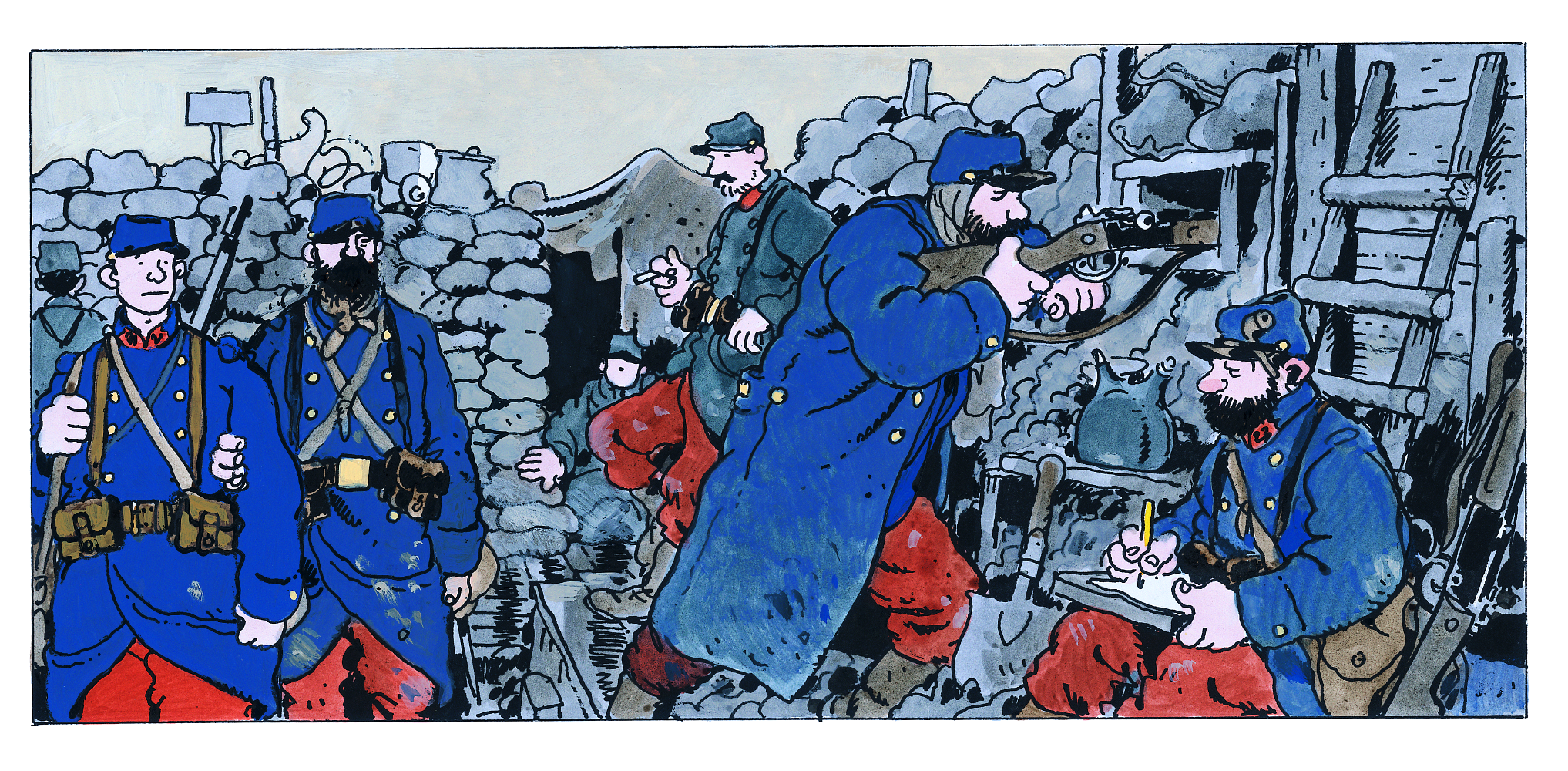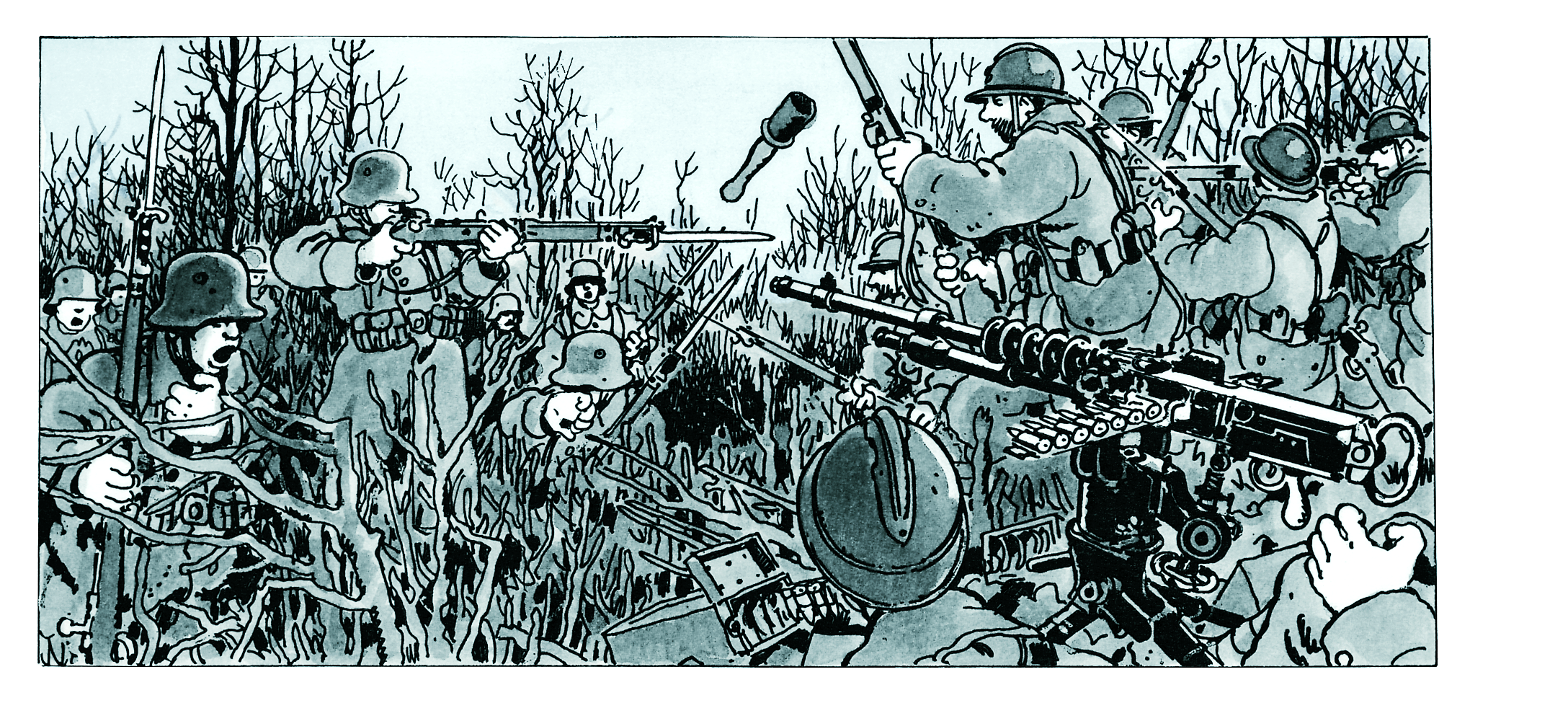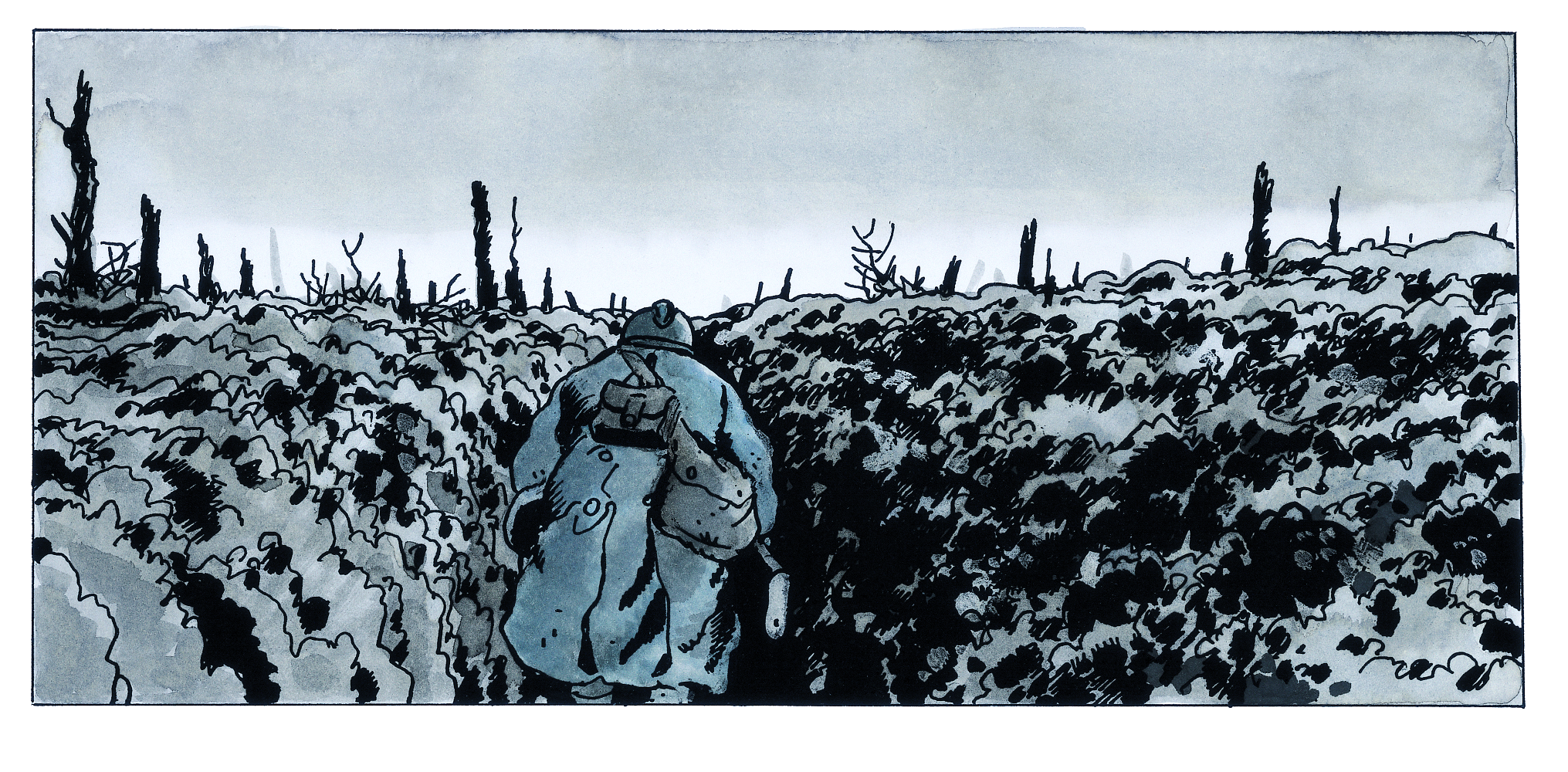Tardi- exhibition at the Abbey Neumünster

Luxembourg. A banner, showing a drawn war scene, is hanging above the entrance of the exhibition in the courtyard of the Abbey Neumünster. „Putain de Guerre! Elender Krieg! (Miserable War!)“ is the exhibition’s title about the oeuvres of the French comic artist Tardi. The topic of the 100 original drawings is World War 1, which the artist is already illustrating for almost 40 years. For the time of the 15th July until the 7th September Tardi’s drawings can be visited at the Abbey Neumünster in Grund for free.
A unique atmosphere is attached to this exhibit due to the three vaulted exhibition rooms. The most important battle or the end of the war is not shown in the drawings: the main focus is on the normal soldier’s life. The visitor can follow introductions of different characters, horror of war, life in the trenches, injuries, devastation and death in the individual rooms.
Even when they are “just“ drawings, the pictures are frightening due to their cruelty and stay in the visitor’s minds. Glaring contrasts are shown in the oeuvres: the picturesque meadow with red flowers becomes bizarre, when on both fronts soldiers arrive and die numerously in the course of the comic.
One thing is shown by the exhibition very clearly: the war changes everything into horror and death.
In addition to the drawings, samples of the First World War are presented behind glass on tables and walls. Medals of honour, obituaries and rolls of honour can be seen. Between all this, posters with information about the artist are placed. They tell the artist’s life and connection to the topic of war. His family is connected to both world wars: his grandfather became a victim of toxic gas in WWI and his father was war prisoner in WWII.
The French-German exhibition adds citations from different years of the war to the already authentic picture of horror of World War One. At the time of 1914, the outbreak of war, the enthusiasm is clearly visible: the soldiers go to war with the feeling of superiority. They are sure that they are able to defeat the enemy in a short time and that they will come home as glorious heroes. With a glance to the numbers of victims, it becomes clear, that most of these soldiers never came back. These incredibly huge and unimaginable numbers stand for themselves, without further explanations needed. Every number was one life.
Over the years, the news coverage changed: the citations in newspapers were from positive generals who should spread confidence. The dead were only named in the consequence, that today’s soldiers had to end what the dead had begun.
In the end there is just the impersonal listing of the lasting horror: millions of dead, injured, orphans and widows.
Tardi’s oeuvres can not only be seen related to the First World War. They show the general ugliness of war and can also be transferred to today’s world. The visitor leaves this exhibition reflective and thankful to live in a time of peace in Europe.
photos: Abbey Neumünster








Comments are closed.